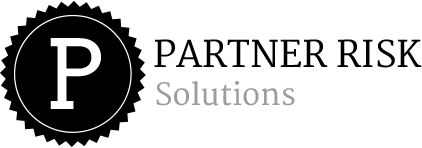In commercial property insurance, brokers and underwriters share the same goal – to secure the right cover for the client, on the right terms, with clarity from the outset. Yet even with this shared purpose, there’s often a gap between what brokers expect from the commercial insurance underwriting process and what underwriters need in order to make sound decisions.
This isn’t about criticism. Many brokers already provide exceptionally detailed submissions, and PARTNER RISK values those partnerships highly. They set the benchmark for efficient insurance placement. However, in some cases, initial information simply isn’t enough for quick decision-making. Recognising and closing that gap through proper broker-underwriter collaboration benefits everyone – especially the broker’s client.
Understanding Commercial Insurance Underwriting at PARTNER RISK
Commercial insurance underwriting involves assessing the desirability of a risk and its characteristics before deciding whether to accept the risk, on what terms, and at what price. After decades in this industry, I can tell you that the above responsibility hasn’t changed.
What makes PARTNER RISK different is our depth of risk assessment in commercial asset insurance to ensure the right placement outcomes for brokers and their clients.
Eight Core Underwriting Assessment Criteria
Every commercial property insurance risk gets evaluated across a number of critical assessment criteria. The following eight criteria are suggested for assessment:
Fire protections – Sprinkler systems, alarms, hydrants, and extinguishers that meet recognised standards and receive proper maintenance.
Security protections – Perimeter fencing, access control, CCTV, intrusion detection, and appropriate guarding.
Risk management culture – How seriously the insured takes safety protocols, compliance, and prevention measures.
Location-specific perils – Flood zones, landslide-prone slopes, or proximity to hazardous neighbouring operations.
Financial strength – Whether the insured can actually generate adequate cash flows and profits in order to operate and grow their business.
Loss history patterns – What’s happened before, why it happened, and whether it points to bigger problems.
Exposure analysis in underwriting – Getting the capacity levels, cover limits, sub-limits, exclusions, and deductibles right for the specific risk.
Environmental social and governance – What is the client doing to manage physical and transitional risks to ensure a wider responsibility towards sustainability in environmental, social and governance imperatives.
Fire and security risk management, combined with risk management culture, and historical losses drive about 80% of our underwriting decision-making process.
Why Loss History Alone Doesn’t Cut It
Loss experience matters, but it’s only part of the story. I’ve seen insured properties with clean claims records over five years that were simply lucky. Without proper risk controls, one large loss incident could cause massive damage and business interruption.
Here’s what I mean: a well-maintained warehouse in a secure industrial park with solid fire and security risk management will get better terms than a similar facility in a flood-prone location with ageing infrastructure – even if both have identical loss records.
The difference comes down to what could go wrong, not just what has gone wrong.
What We Really Look At in the Insurance Placement Process
Our insurance placement process goes beyond the obvious through detailed risk assessment in commercial insurance:
Neighbouring hazards – Your client might run a tight operation, but if the factory next door stores chemicals and cuts corners on safety, that becomes our problem too.
Municipal enforcement differences – Building code compliance varies dramatically across South African commercial and industrial markets.
Financial warning signs – When cash gets tight, maintenance gets deferred. I’ve seen too many good risks turn bad because someone delayed servicing critical systems to save money.
Risk management culture problems – If management pushes back on basic safety recommendations, you know they’ll likely ignore everything else we suggest.
Sometimes one major red flag, like a poor approach to risk management culture, can sink an otherwise decent submission in our underwriting decision-making.
South African Commercial Insurance Realities
Working in South African commercial insurance means dealing with unique challenges:
Flood and storm exposure – KwaZulu-Natal’s flood history forces us to be very careful about location-specific coverage and capacity decisions.
Loadshedding complications – Fire risks spike when backup generators or battery inverters are poorly installed or maintained. Ensuring electrical compliance certificates are up to date mitigates the risk of hot spots and dangerous connections.
Water supply problems – Even the best sprinkler system won’t help if there’s no water pressure or flow when you need it.
Geographic concentrations – Too many high-value properties clustered together means we need to adjust capacity levels for potential communicating or catastrophic losses.
Understanding these South African commercial insurance realities helps us structure terms that actually work for brokers and their clients.
Getting to Contract Certainty
Contract certainty in insurance happens when underwriters get complete information upfront. The faster we understand the risk, the quicker we can make decisions.
Brokers who achieve contract certainty in insurance usually provide:
- Detailed insurance risk survey reports with actual system information, not generic descriptions
- Proof of fire, safety and security compliance with maintenance records
- Clear information about improvements they’ve made or are planning
- Financial documentation that supports the capacity they’re requesting
Thorough submissions cut down on endless questions, speed up the insurance placement process, and get to the right solutions faster.
Making Broker-Underwriter Collaboration Work
Good broker-underwriter collaboration happens when both sides understand what the other needs. Brokers bring client knowledge and market expertise; underwriters provide technical risk assessment and capacity decisions.
As I regularly tell broker partners: “Help us understand the risk properly from the start, and we’ll get to the right answer quickly. The more we know upfront, the more certain we can be about the terms of the insurance contract.”
This doesn’t mean changing how brokers work, but recognising that complete initial submissions make the entire insurance placement process smoother for everyone.
Getting Risk Assessment Right
Commercial insurance underwriting requires proper risk evaluation that combines technical analysis, professional judgement, and thorough exposure analysis in underwriting. It’s not about following a formula based on last year’s losses or this year’s market rates.
At PARTNER RISK, our approach to risk assessment in commercial insurance ensures brokers get well-structured, competitive solutions for their clients. Through effective broker-underwriter collaboration and proper information sharing, we are more likely to achieve contract certainty in insurance.
For more information about working with PARTNER RISK, brokers can contact us directly to discuss specific placement requirements and how we can collaborate more effectively.


